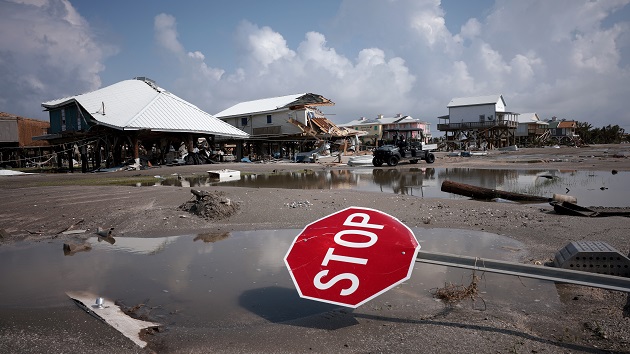Hurricane season brings unity between areas of impact
GRAND ISLE, LOUISIANA – SEPTEMBER 02: Homes destroyed in the wake of Hurricane Ida are shown September 2, 2021 in Grand Isle, Louisiana. Ida made landfall August 29 as a Category 4 storm near Grand Isle, southwest of New Orleans, causing widespread power outages, flooding and massive damage. (Photo by Win McNamee/Getty Images)
September 7, 2021
The city spent 43 days underwater, suffered over 1,800 deaths, cost $125 billion in damages and relief and will never be quite the same. Thousands of people are still picking up the pieces from when Hurricane Katrina devastated New Orleans and other parts of Louisiana in 2005 after storm surges breached the levees and overtook the city.
On the 16th anniversary of the historic storm, the people of New Orleans prepared to be hit again. Hurricane Ida ripped its way up the Gulf Coast, leaving thousands of people scared to relive their worst memories.
Just as in 2005, the evacuation orders went out early. During Katrina, tens of thousands of people stayed below sea level in their homes or shelters only to be met with violent water and winds. The memories of being rescued from roofs by helicopters and boats will likely stick with these locals for the rest of their lives.
After news of Hurricane Ida, those outside the levee protection system were put under a mandatory evacuation and those within the levees were voluntarily evacuated, mostly due to the lack of time to get everyone out safely.
Many of these evacuees came to Pensacola, Florida. I’ve had the privilege of getting to know some of these people and learn more about how storms like these affect those in its path.
A couple from New Orleans explained that they consider the stretch of coast between our two cities to be in an understanding. They went on to say that they love to visit Pensacola periodically anyway, but they know that during times like these it’s an embracive safe haven.
“We all understand the feeling of not knowing what’s coming or what will make it through,” the couple said. “We know how quickly things can change and how suddenly we can have nothing. I think that makes us all more welcoming, because we all get it.”
A family of four, three generations of women, sat for hours at a restaurant in downtown Pensacola. A grandmother, her daughter and her two granddaughters cried while waiting at their table. They paused to make phone calls, would talk for a few minutes, but would always end up back in tears.
They eventually pulled their emotions together, and the mother explained that they were in Pensacola evacuating from the storm.
“We are just so afraid of losing everything we have worked so hard for,” the mother of the two granddaughters explained. She and her daughters live with their grandmother outside the levee protection system.
“We have no idea how long we will be gone and what we will be going home to eventually,” she added. “But at least we are here, together and safe.”
These feelings are all but unusual to many Pensacola locals who have been here since before Hurricane Ivan took its toll in 2004. With winds of 130 mph and storm surges reaching up to 15 feet tall, this town took a beating.
I’ve seen locals talk for hours with families evacuating as they share stories of storms from the past. From escaping to staying and bunkering down, being rescued, having to rebuild or luckily being left untouched, everyone has their own story to tell.
There is an understood reciprocal relationship between areas affected by these catastrophic storms. The doors are always open to each other to offer support in the other’s time of need. Hurricane season is a scary and pivotal time for some areas, but learning how to prepare, when to leave and having help to depend on can be the difference between life and death.


